Menu
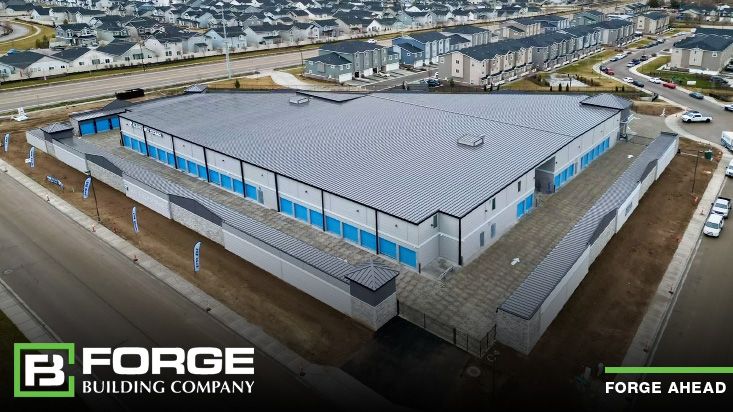
The self storage industry is evolving. As we enter 2025, this industry is well-positioned to adapt to the shifting landscape of increased mobility and shifting customer expectations. Facility owners and operators who invest in flexible pricing, innovative technology solutions, and targeted regional marketing will be better equipped to thrive in this evolving market.
In our previous blog, “2025 Self Storage Industry Growth Projections and Trends,” we looked at top trends and innovations expected to shape the construction industry in 2025. From an investment standpoint, Self Storage still provides great opportunities for investors. The US market alone is expected to jump from $44.37 billion to $49.88 billion by 2029. This represents a Compound Annual Growth Rate of 2.37%1.
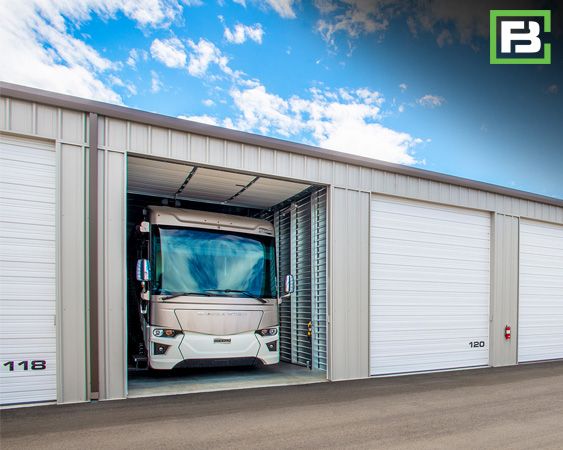 Price Matters. Price is a significant factor when it comes to self storage. In the Storable survey, 83% of respondents emphasized that price is a significant factor when choosing a storage unit. Affordable, flexible options will likely remain a key selling point for facility owners. Convenience and location also rank high, with 68% of respondents emphasizing the importance of accessible facilities.
Price Matters. Price is a significant factor when it comes to self storage. In the Storable survey, 83% of respondents emphasized that price is a significant factor when choosing a storage unit. Affordable, flexible options will likely remain a key selling point for facility owners. Convenience and location also rank high, with 68% of respondents emphasizing the importance of accessible facilities.This expansion has been fueled primarily by an increase in RV ownership and a rising population of boating enthusiasts, creating a demand for dependable storage solutions during periods of inactivity. Storage options may include uncovered storage, canopies (or covered storage), or storage condos (fully enclosed storage).
In our blog, “Investing in Storage Condominiums,” we address this sector of Boat and RV Storage as a great investment alternative.
Investors and facility owners should also consider the growing demand for short-term storage. With 79% of customers needing storage for six months or less, flexibility in rental terms and ease of extension could be a game-changer for attracting and retaining customers.
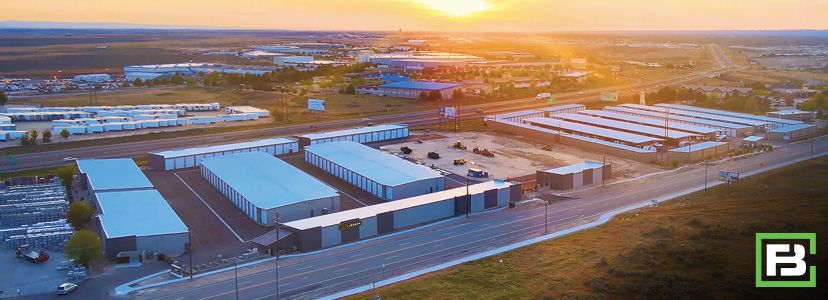
As more people plan moves, the demand for storage is projected to grow. Current facility owners must adapt by offering value-driven services while keeping prices attractive to stay competitive.
The global population is increasing. More people means more stuff creating a need to stash their belongings. With the increased cost of living, many young professionals are opting to rent rather than buy, living in apartments and condos with limited space.
Self storage is profitable. Revenue from self storage rentals and sales is on the rise. The US market alone is expected to jump from $44.37 billion to $49.88 billion by 2029. With high demand and significant cash flow potential, self storage is an appealing real estate investment.
The self storage industry shows no signs of slowing down, and recent trends explain why there are so many storage facilities. In our blog, “Self Storage is an Investment Alternative,” we discuss the primary reason investors look at this asset class is because it can be an inflation hedge. This is still true today.
Here’s what the Forge President and CEO have to say about “Self storage as an investment.”
Strong market fundamentals, smart investments in technology, and a growing customer base all point to continued opportunities for self storage facility owners and investors. The demand for extra space isn’t going away anytime soon. For people and businesses with too much stuff and not enough room, self storage provides an ideal solution.
References
1. Davison, M. (2024, July 4). Storeganise. Retrieved from storeganise.com:
https://storeganise.com/blog/why-are-so-many-storage-facilities-being-built
2. Storable. (2024, October 22). Retrieved from storable.com:
https://www.storable.com/resources/learn/2025-self-storage-industry-outlook-trends-to-watch/
3. Investinselfstorage.com. (2024). Retrieved from StorageUnits:
https://investinselfstorage.com/2025-self-storage-industry-outlook-whats-ahead/
4. Verified Market Reports. (2024, November). Retrieved from verifiedmarketreports.com:
https://www.verifiedmarketreports.com/product/rv-and-boat-storage-market/
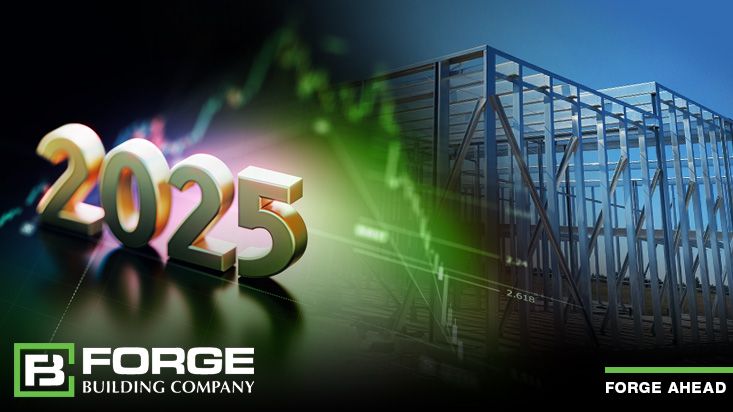
As 2024 winds down, it is a good time to reflect on the current year and look to the year ahead. In a report from Deloitte Research Center for Energy & Industrials, “The construction industry in 2024 was defined by strong fundamentals, marked by a 10% increase in nominal value added and a 12% increase in gross output. Construction spending crossed US $2 trillion and maintained a balanced trajectory in the first half of 2024”1.
Nevertheless, the industry had its fair share of challenges. High interest rates and price inflation continued to affect the commercial segment. Looking ahead to 2025, there are reasons to be more optimistic. According to the Deloitte analysis of the Oxford Economic Model, short-term interest rates are likely to decrease gradually over the next couple of years, following a 50 basis point interest rate cut by the Federal Reserve in September 2024. The improving economic conditions are likely to influence construction demand across various segments.
Overall, the US construction industry is likely to record moderate growth in the medium term with slowing inflation and a supportive monetary policy. However, the construction industry, and especially those utilizing steel, such as Forge, is not without additional challenges.
Here’s a look at some of the top trends and innovations expected to shape the construction industry in 20252.
 In 2025, sustainability will continue to be a priority in construction. Governments, stakeholders, and the public are pressing for greener buildings to mitigate environmental impact and reduce carbon footprints.
In 2025, sustainability will continue to be a priority in construction. Governments, stakeholders, and the public are pressing for greener buildings to mitigate environmental impact and reduce carbon footprints.
The push for net-zero buildings by 2050 has also influenced design approaches and material choices. Technologies like carbon-capturing concrete and bio-based materials, including hempcrete and timber alternatives, are gaining traction. Modular and prefabricated buildings, which produce less waste and consume fewer resources, are also gaining favor. In addition, many governments have implemented regulations to limit emissions in construction processes, pushing companies to adopt sustainable practices or risk fines and reputational damage.
Modular and off-site construction techniques are expected to flourish in 2025 as companies look for efficient ways to manage time and reduce costs. Prefabricated components can be manufactured off-site and assembled at the project location, reducing waste, speeding up project timelines, and minimizing on-site disruptions.
This approach is especially advantageous for urban construction, where space is limited and labor costs are high. Modular construction also allows for greater quality control as components are built in controlled factory environments. As these techniques become more mainstream, they’re likely to reshape how commercial structures are built.
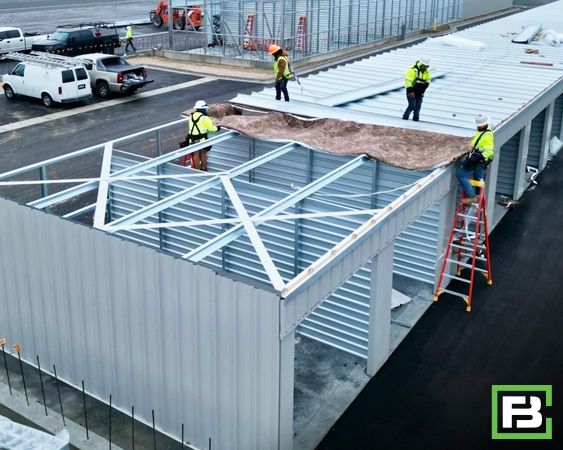 With climate change increasing the frequency and severity of natural disasters, building resilient infrastructure is a growing priority. In 2025, more construction projects are expected to integrate features that help buildings withstand extreme weather events like hurricanes, floods, and wildfires. Materials designed for resilience, such as impact-resistant glass, fireproofing materials, and flood-resistant foundations, are becoming standard in vulnerable areas. Additionally, adaptable infrastructure—such as buildings designed for repurposing rather than demolition—is gaining popularity. As cities continue to grow, adaptive buildings reduce the need for new construction and preserve resources.
With climate change increasing the frequency and severity of natural disasters, building resilient infrastructure is a growing priority. In 2025, more construction projects are expected to integrate features that help buildings withstand extreme weather events like hurricanes, floods, and wildfires. Materials designed for resilience, such as impact-resistant glass, fireproofing materials, and flood-resistant foundations, are becoming standard in vulnerable areas. Additionally, adaptable infrastructure—such as buildings designed for repurposing rather than demolition—is gaining popularity. As cities continue to grow, adaptive buildings reduce the need for new construction and preserve resources.
Governments worldwide are tightening construction regulations to meet environmental targets and improve safety standards. Regulations related to carbon emissions, waste management, and energy efficiency are becoming more stringent. At the same time, incentives are being offered for sustainable building practices, such as tax breaks, grants, and financing options for projects that meet high environmental standards.
On the flip side, 2025 will also have its challenges.
On September 5th, the Department of Commerce announced the antidumping duty (AD) and countervailing duty (CVD) investigations on steel imports coming from ten countries3. Over the next several months, this investigation could drive domestic steel prices up in anticipation that these countries are guilty of dumping. If these countries are found guilty, a duty will be applied to all imported steel. When the price of imports goes up, the domestic steel mills will likely counter by raising their prices too.
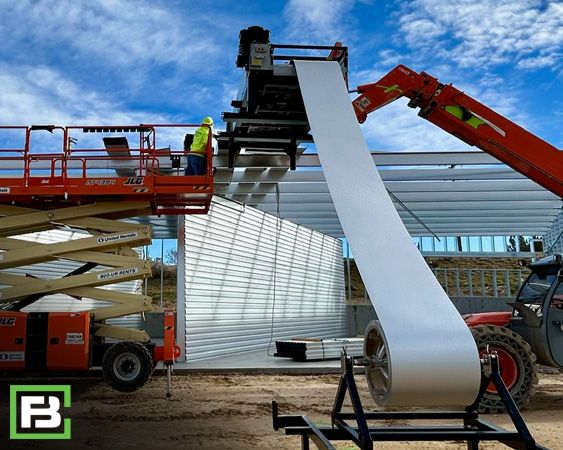 Forge Building Company has noticed that since the announcement of this investigation, CRU steel pricing has started increasing. It is unknown at what rate the mills will escalate pricing or at what interval; however, it is the company’s professional opinion, based on experience, that prices are going to trend up over the next year.
Forge Building Company has noticed that since the announcement of this investigation, CRU steel pricing has started increasing. It is unknown at what rate the mills will escalate pricing or at what interval; however, it is the company’s professional opinion, based on experience, that prices are going to trend up over the next year.
During 2024, there was a lot of price correction in the market due to the aftermath of COVID-19 pandemic. The Forge team watched steel prices steadily decreasing over the last year; however, economists believe that there will be a higher demand for steel in 2025. When this is taken into account along with the impacts of the AD/CVD investigation, then it is very likely that prices for steel will increase.
Another trend to watch for 2025 is new legislation affecting the commercial (or self storage sector). While each state has its own laws regarding the operation of a self storage business, there are often similarities among them. The team at Forge has addressed these in previous years. See:
New Laws for the New Year that Could Impact Your Storage Business
2024 Self Storage Industry Growth Projections and Trends
Here’s a summary of some of the new laws taking effect next year4.
If a self storage tenant fails to move out after receiving a termination notice, the operator must file an eviction action with the local court and go through the hassle of removing them. With a recent wave of legislation in California, Georgia, Idaho, Kansas, and Utah self storage operators are entitled to terminate a tenant’s rental agreement and dispose of their property if the tenant doesn’t vacate the space within a certain amount of time. Each of these laws requires the operator to send a notice to the tenant clearly stating the demand timeline. The statutes will allow operators in these states to remove troublesome tenants and free up their storage units much quicker and at a fraction of the cost.
This new legislation impacts the self storage industry as more operators offer discounted pricing via their websites. Therefore, operators must update their website to clarify pricing and any additional charges, making sure to disclose any administrative or other fees that are added on top of the rent. Additionally, the same goes with any other advertising. When offering an initial, discounted rate, operators must disclose how much it is, how long it’ll last, and the rent the tenant will be charged once it ends. More than ever, it’s important to be transparent about move-in rates, the right to increase rent, and any fees that can be charged to the customer.
For 2025, the construction industry is moving toward a more sustainable, tech-driven, and resilient future. While labor shortages and regulatory hurdles will present challenges, they also push the industry toward innovation. The emphasis on sustainability, modular construction, and smart infrastructure is reshaping the industry’s landscape, making it an exciting time for both seasoned professionals and new entrants. As the construction industry evolves to meet these demands, companies, such as Forge, that embrace change, invest in digital transformation, and prioritize sustainability will be best positioned to thrive in the years to come.

Works Cited
1. akingump.com. (2024, September 12). Retrieved from Akin: https://www.akingump.com/en/insights/alerts/new-antidumping-and-countervailing-duty-petitions-on-certain-corrosion-resistant-steel-products-from-ten-countries
2. azclc.com. (2024, 6 November). Retrieved from Arizona Contractor License Center: https://www.azclc.com/blog/construction-industry-outlook-for-2025-trends-challenges-and-innovations
3. Deloitte.com. (2024, November 4). Retrieved from Deloitte Research Center for Energy & Industrials: https://www2.deloitte.com/us/en/insights/industry/engineering-and-construction/engineering-and-construction-industry-outlook.html
4. Oblinger, A. (2024, October 5). insideselfstorage.com. Retrieved from Inside Self-Storage: https://www.insideselfstorage.com/legal-issues/the-modernization-of-state-self-storage-laws-recent-changes-and-the-modifications-on-the-horizon
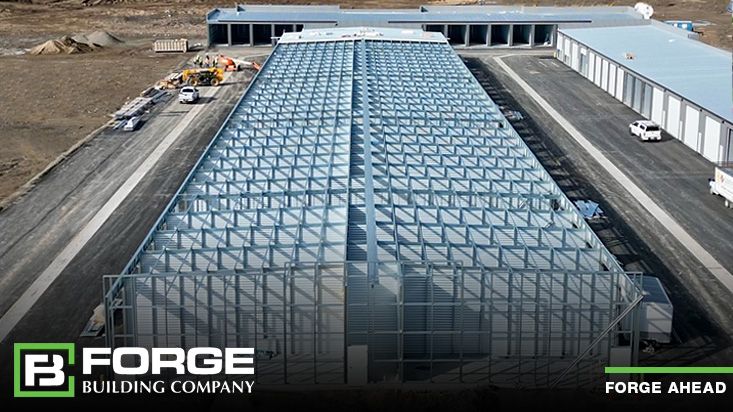
Forge Building Company stands as the pinnacle of expertise in steel building construction, renowned as the industry-leading steel building expert. The company’s supremacy is underscored by its comprehensive structural engineering services, that encompass design-build solutions that consistently surpass customer expectations. While the company excels in supplying premium-grade steel, it understands that robust design and meticulous planning are pivotal for project success. Thus, one of the company’s key offerings is expert structural engineering support to seamlessly actualize a customer’s vision.
See what our customer, Mychal Gorden of Desert Land Group, has to say:
youtube.com/watch
The Forge engineers are dedicated to collaborating closely with their customers to translate abstract concepts into practical, innovative structural solutions. Whether your project entails a single-story drive-up facility, a multi-story complex, covered boat and RV storage, storage condos, a modern pre-engineered metal building, or a fusion of these elements, the Forge team possesses the expertise and creativity to materialize those concepts into the customer’s dream facility.
Leveraging cutting-edge software and technologies, Structural Engineering creates detailed drawings and plans that serve as the project’s blueprint that helps drive and determine costs. Utilizing the Forge Engineering team enables more cost-effective practices using our designs, saving the clients money. These designs include critical details essential for installation – from precise dimensions and material specifications to load calculations and structural analysis. Every aspect of the design is carefully documented to ensure accuracy and compliance with industry standards while also saving the client money.
Forge Building Company’s unwavering commitment to excellence resonates throughout the structural engineering process. Forge ensures that the customer’s project is not only visually striking but also structurally robust and compliant with the highest industry standards. Each customer can trust Forge to bring their vision to life with unparalleled precision and innovation, delivering results that surpass expectations.
See what our customer, Adam Pakes, CEO of LuxeLocker has to say:
With Forge Building Company as a partner, the customer gains access to a team of dedicated professionals who are committed to realizing their construction aspirations with exceptional expertise. Forge’s reputation for excellence precedes them, and they take pride in their ability to consistently deliver exceptional results that stand the test of time.
Contact us today to embark on a journey toward turning your vision of any sort of metal self storage building into reality with precision, innovation, and unmatched expertise.
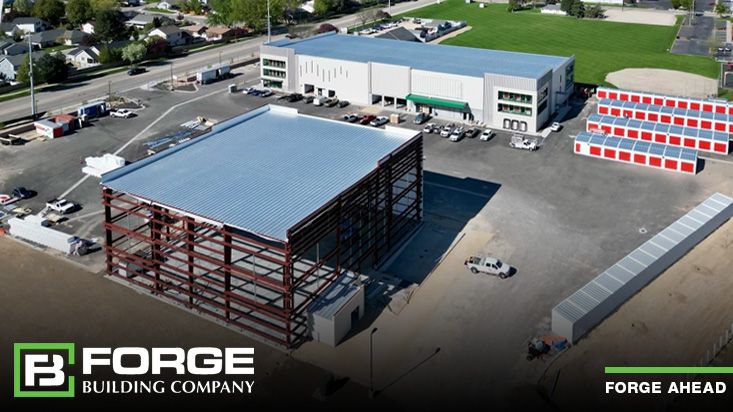
One of the most anxiety-producing steps in self storage investing and development can be figuring out the right mix of unit sizes (and types) to build. There are so many factors that go into this decision from the size of your land, to your location, demographics, competition, budget, and more.
The most reliable means to determine the self storage demand for your facility is by engaging in a market feasibility study that will look at customer demographics and competitive landscape. These two elements are key when developing your self storage business plan and determining what types of self storage to build and what rates you can charge. See our latest blog on self storage site plans.
In today’s economy, Forge is seeing many of our customers adding in Pre-Engineered Metal Buildings (PEMBs) along with traditional storage. PEMBs provide incredible versatility, reduced construction time, and weather-resistant properties. They are especially well suited for storage facilities. See our blog, “Pre-Engineered Metal Buildings – An Investment Alternative.”
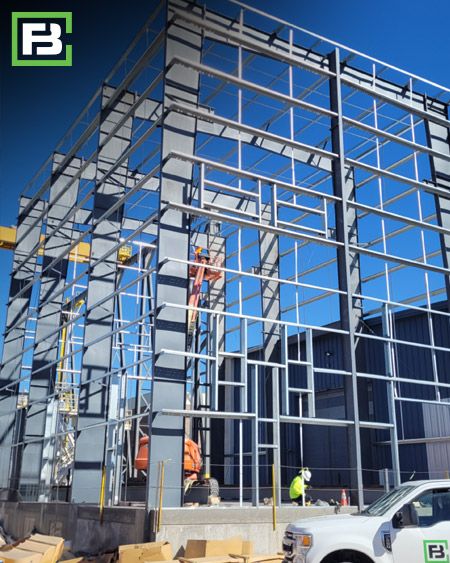
With PEMBs, the modular design provides a diverse amount of customizable design options. PEMBs can be designed with a variety of precise configurations to suit various needs within the same storage facility. Storage facilities, especially those that may include boat, RV, or vehicle storage often require wide open floor plans with a variety of custom, convenient entrances for larger inventory. With modular floor plans and versatile customization options inside and out, mixing PEMBs with Standard Self Storage is a perfect solution for any storage facility project.
Pre-engineered metal buildings help ensure the longevity and ease of maintenance of any storage facility due to their durability and resistance to harsh weather conditions, seismic activity, mold, and pests. The naturally resilient steel used to construct a pre-engineered metal building will never warp, rot, or attract pests like wood-eating insects. The galvanized steel framing system is also treated with a moisture-resistant coating, which makes it impervious to rust and corrosion. This coating is also applied to the wall panels and roofing, preserving their color and making them more resistant to weather, dirt, and other damage as well.
Many PEMBs are designed with energy efficiency in mind. These buildings can accommodate insulation, energy-efficient HVAC systems, and sustainable building practices, leading to reduced energy consumption and lower operating costs over the building’s lifespan.
With the components of the building pre-engineered off-site, storage facility construction time can be greatly reduced. While each component is manufactured according to precise factory regulations, your general contractor can carry out all the necessary steps to prepare the construction site. This may include demolition, laying the foundation, installing plumbing and other utilities, and more. Since these phases of the project can be completed simultaneously, the overall timeline of storage facility construction projects is reduced.
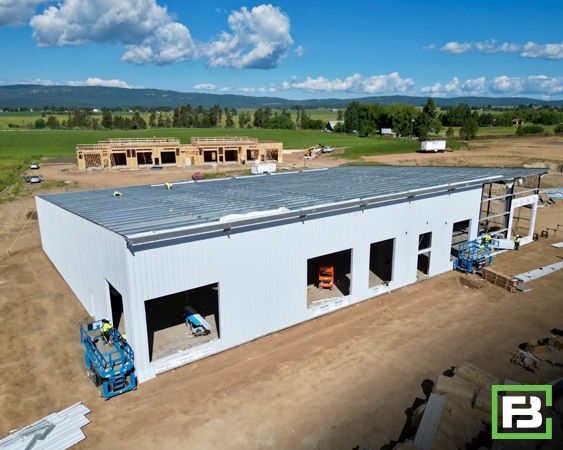 Because PEMBs are manufactured offsite, the manufacturing process reduces labor costs, material waste, and construction time, leading to overall lower project costs. With a reduced construction time, using a pre-engineered metal building for a storage facility construction project can also reduce the overall cost of the whole operation. Once the steel framing system has been manufactured and delivered to the construction site, PEMBs can be erected faster and more efficiently, dramatically reducing on-site labor costs.
Because PEMBs are manufactured offsite, the manufacturing process reduces labor costs, material waste, and construction time, leading to overall lower project costs. With a reduced construction time, using a pre-engineered metal building for a storage facility construction project can also reduce the overall cost of the whole operation. Once the steel framing system has been manufactured and delivered to the construction site, PEMBs can be erected faster and more efficiently, dramatically reducing on-site labor costs.
With over 15+ years in the industry, Forge Building Company IS the Steel Building Expert. We have contributed to the success of over 500+ self-storage projects. The team at Forge is ready to provide insight and guidance as to “Best Building Practices” when it comes to developing or expanding facilities. Forge has a team of dedicated professionals committed to excellence in planning, design, engineering, construction, and project management.
Through strategic planning and prudent decision-making, Forge developers can navigate challenges and capitalize on opportunities to create successful self storage facilities that deliver value to investors, tenants, and the community alike.
When you choose Forge, you are choosing quality, reliability, and innovation every step of the way. With the company’s proven track record of delivering superior results, you can trust Forge Building Company to bring your vision to life with precision, efficiency, and unmatched expertise. Contact us today to discover how we can elevate your next project to new heights and success.
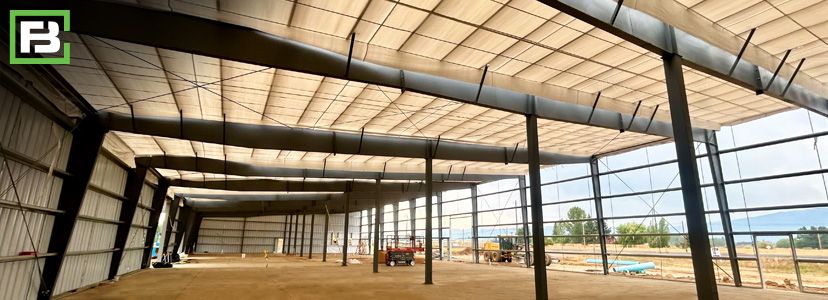
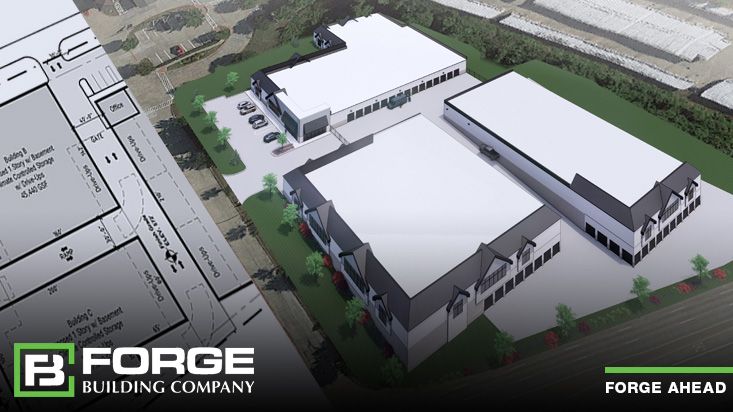
When building a self storage facility, it is easy to get lost in the process. Many people get ahead of themselves and envision the features they want in their facility, or how they want it to look while overlooking one crucial step: the site plan.
Before construction begins, a conceptual site plan (CSP) should be completed. This is a visual representation or sketch that outlines the proposed layout and design of your facility. It typically includes key elements such as buildings, landscaping, parking areas, access points, utilities, power lines, terrain, and other features relevant to the development of your self storage facility. This will help you and other stakeholders visualize the potential development and make more informed decisions about the project before investing in architectural drawings1. This is why it’s key to work with the steel building experts at Forge.
At Forge Building Company, we start with a comprehensive evaluation of your project’s requirements, including site details, budget constraints, and timelines. Throughout this process, we are able to come up with solutions that ensure your project’s success.
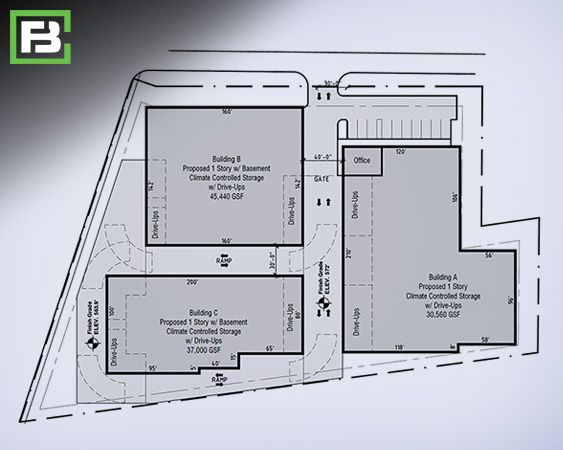 Before ground can be broken on your self storage project, the site plan is a critical piece of the equation that will be used for the review and approval process by the planning department in your municipality. The planning department will review the site plan to ensure it adheres to all applicable ordinances and development standards.
Before ground can be broken on your self storage project, the site plan is a critical piece of the equation that will be used for the review and approval process by the planning department in your municipality. The planning department will review the site plan to ensure it adheres to all applicable ordinances and development standards.
The site plan also serves as a common operating picture and project roadmap for the development team. Capturing all major elements including site engineering and construction elements in a single plan will serve to keep the efforts of the engineers, architects, general contractors, and developers aligned. It will also help with project budgeting and provide the entire team with the elements needed to make informed decisions.
The site plan will provide you with a visual representation of your vision for your self storage facility. Seeing your vision on paper (or screen) will enable you to have a clearer understanding of what you are trying to achieve. This also provides you with the ability to assess the feasibility of your project and make any adjustments if necessary before going out to investors and lenders. Finally, it provides you with a document that ensures your project stays on course and aligns with your objectives.
Partnering with the experts at Forge Building Company will help ensure that your vision becomes a reality. When drafting a site plan, we oversee all aspects of the planning process to ensure that everything is up to standard and exactly how you envision it.
When creating your site plan, there are several elements that should be included2.
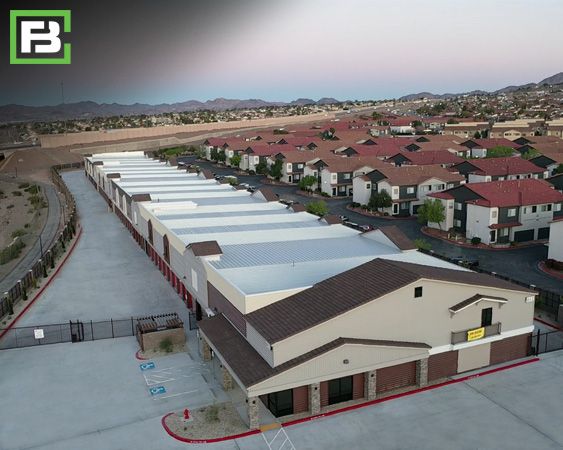
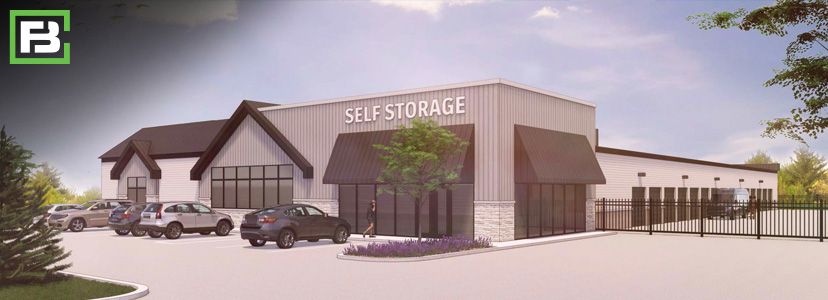
When you choose to work with the steel building experts at Forge Building Company, you can rest assured that all your site planning needs will be taken care of. Our team of experts will provide strategic plans that maximize space, improve your facility’s functionality, and increase efficiency.
Secondly, entrusting the team at Forge Building Company to complete your conceptual site plan ensures that every detail of your facility will be carefully drawn up and communicated with everyone involved in developing your facility.
Finally, by choosing Forge Building Company for your next project, you will experience firsthand the transformative impact of meticulous planning and years of experience to ensure that every decision you make is the right one.
Reach out to us today to discover how we can bring your vision to reality with precision, efficiency, and unparalleled expertise.
References
1. Hover Architecture. (n.d.). Retrieved from https://hoverarchitecture.com/: https://hoverarchitecture.com/csp/
2. MT Copeland. (2020, June 30). Retrieved from mtcopeland.com: https://mtcopeland.com/blog/what-is-a-site-plan-11-things-good-site-plans-must-include/
When developing a self storage facility, numerous decisions influence the project’s success and profitability. One critical decision is whether to build a single-story or multi-story self storage facility. For investors and developers, understanding the factors that make a multi-story facility advantageous is essential for maximizing return on investment (ROI). This blog explores the key considerations that may favor the construction of a multi-story self storage facility over a single-story one.
The location of the parcel plays a crucial role in determining whether a multi-story facility is feasible. In metropolitan areas where land prices are steep, maximizing the use of vertical space becomes necessary to justify the high land acquisition costs. For instance, purchasing five acres in a rural area might cost the same as acquiring one acre in a metropolitan area due to supply-demand dynamics and population density.
Metropolitan areas often face scarcity in undeveloped land parcels suitable for large-scale commercial projects like self storage facilities. This scarcity drives up land prices and necessitates, resulting in the need for innovative solutions to maximize usable space. In contrast, rural areas may offer more expansive land options at lower costs, making single-story developments financially viable unless land restrictions or zoning regulations favor multi-story constructions.
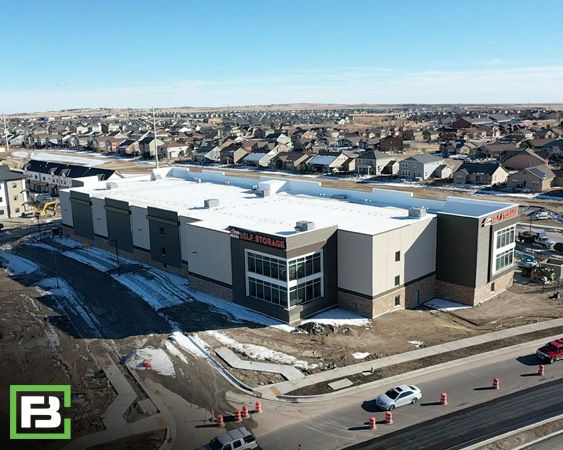 Navigating municipality regulations is crucial for any development project, particularly for multi-story facilities. The Authority Having Jurisdiction (AHJ), typically managed through a Planning and Zoning Department, dictates what can be built on a specific parcel of land. Regulations often include restrictions on building height, setback requirements, fire safety standards, and environmental considerations.
Navigating municipality regulations is crucial for any development project, particularly for multi-story facilities. The Authority Having Jurisdiction (AHJ), typically managed through a Planning and Zoning Department, dictates what can be built on a specific parcel of land. Regulations often include restrictions on building height, setback requirements, fire safety standards, and environmental considerations.
In urban settings, zoning laws may favor vertical development to accommodate population density while maintaining urban aesthetics and infrastructure capacities. Compliance with these regulations ensures that the facility meets safety standards and operational requirements, which may include provisions for parking, access roads, and utility connections.
The physical characteristics of the land parcel influence construction feasibility and costs. Easements, setbacks, wetlands, and uneven terrain can limit the buildable area or necessitate creative design solutions for multi-story structures. Steep elevations, for example, may allow for bi-level (under/over) designs that utilize the natural slope of the land, reducing the need for costly excavation or elevator installations.
Moreover, land parcels with strategic advantages such as proximity to transportation hubs or high-density residential areas can enhance the viability of a multi-story self storage facility. By optimizing land use through innovative architectural and engineering solutions, developers can mitigate construction challenges and capitalize on unique site attributes.
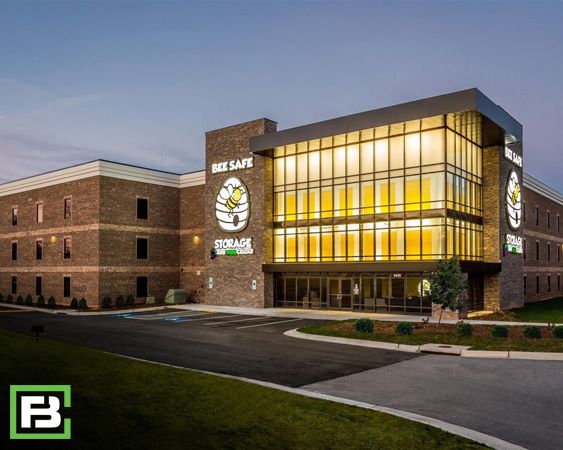
Conducting a comprehensive market feasibility study is essential for evaluating the demand and competitive landscape of the self storage market in a specific location. Factors such as population demographics, existing storage facilities, rental rates, and consumer preferences provide critical insights into market dynamics.
In densely populated urban areas, high demand for storage solutions coupled with limited available space often justifies the higher construction costs associated with multi-story facilities. The study helps investors determine whether the anticipated rental income and occupancy rates justify the additional investment required for vertical construction.
Building a multi-story self storage facility entails higher initial costs compared to single-story constructions. Factors contributing to increased costs include structural reinforcements, elevator installations, stairwells, enhanced security systems, and compliance with building codes and regulations.
Securing adequate financing is paramount to successfully executing a multi-story project within budgetary constraints. Investors may explore various funding options, including commercial loans, private equity partnerships, or crowdfunding, tailored to the project’s scale and financial projections. Proper budgeting and financial planning ensure that the project remains economically viable throughout the construction and operational phases.
Beyond immediate financial considerations, the sustainability and long-term return on investment (ROI) of a multi-story self storage facility depend on operational efficiency, market resilience, and adaptive management practices. Sustainable building designs, energy-efficient systems, and environmentally responsible practices contribute to reducing operational costs and enhancing asset value over time.
Moreover, strategic asset management, tenant retention strategies, and responsive customer service are critical for maintaining high occupancy rates and revenue streams. Investing in technology-driven solutions for facility management and security enhances operational efficiency and customer satisfaction, positioning the facility competitively in the marketplace.
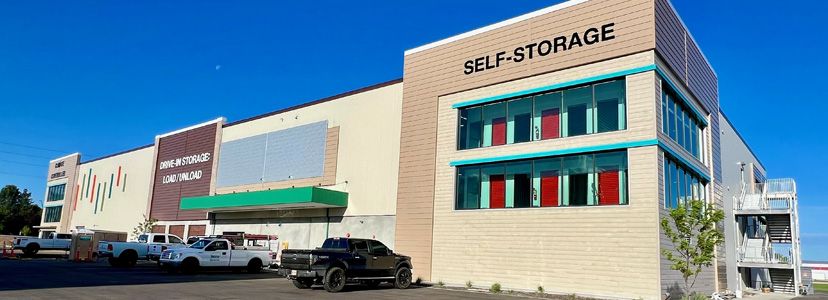
In conclusion, the decision to build a multi-story self storage facility hinges on a complex interplay of location dynamics, regulatory compliance, land constraints, market demand, budget considerations, and long-term investment objectives. While the initial costs and logistical challenges of vertical construction may appear daunting, the potential benefits in maximizing land use efficiency and meeting urban storage demand justify the strategic investment for many developers and investors.
Working with the team at Forge, the steel building experts, will help make this process less daunting. Forge has a team of dedicated professionals committed to excellence in planning, design, engineering, construction, and project management.
Through strategic planning and prudent decision-making, developers can navigate challenges and capitalize on opportunities to create successful multi-story self storage facilities that deliver value to investors, tenants, and the community alike.
When you choose Forge, you are choosing quality, reliability, and innovation every step of the way. With the company’s proven track record of delivering superior results, you can trust Forge Building Company to bring your vision to life with precision, efficiency, and unmatched expertise. Contact us today to discover how we can elevate your next project to new heights and success.
See what Ryan Montoya from Elevate Self Storage has to say about working with the team at Forge:
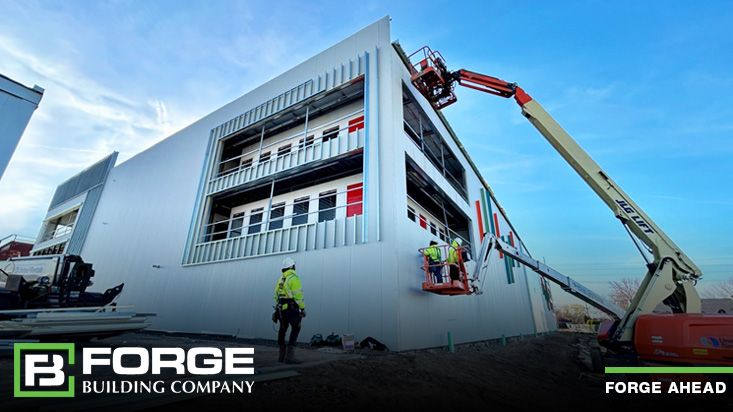
Contributing Editor: Melissa Anderson, Forge Building Company
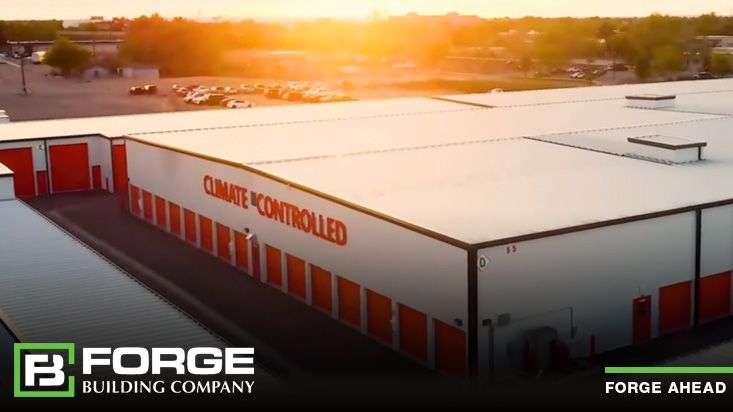
As the self storage market continues to grow, climate-controlled self storage is becoming increasingly popular as customers look for facilities with units that can store and preserve their valuable and sentimental items by controlling temperature and humidity. Climate-controlled self storage can benefit self storage owners in numerous ways – mainly by bringing in more income while differentiating the facility from its competitors. There are several considerations for building and/or converting climate-controlled storage units that we’ll look at in this blog.
The budget for climate-controlled self storage units should include all the costs associated with building and opening a facility. This includes materials, labor, permits and licenses, taxes, insurance, and equipment installation such as HVAC systems, flooring, elevators, and lighting fixtures. In addition to these hard costs, there are also soft costs that need to be taken into consideration such as design fees and marketing expenses.
Once you have factored in all the various cost elements associated with a climate-controlled self storage unit construction project, you can add up all the individual line items to get a total estimated cost for your project.
Before building or converting to climate-controlled storage, here are some things you should consider 1.
Design. Both single- and multi-story building designs are equally suitable for climate control. While a one-story facility only has one air conditioning output level to consider, in a two-story site, you may require greater A/C output on the second level since it will gain heat from the roof. This is why it is key to work with a knowledgeable contractor (such as Forge Building Company) who understands A/C loads.
Demand. Before investing in climate-controlled self storage, it is best to complete a market feasibility study of your location. This will enable you to analyze the competition, consumer/business mix, and income levels.
Areas with higher income levels usually mean that customers are more likely to spend additional money on a climate-controlled storage unit. Locations in business areas will attract a strong storage demand for items such as records, furniture, fixtures, and inventory. At the same time, locations close to highly traveled roads are also valuable to salespeople who may need to store items such as cosmetics and pharmaceuticals, vending supplies, and semi-perishables. Finally, long-term tenants may store their belongings across multiple seasons. These individuals understand that the temperatures can vary widely and go to extremes.
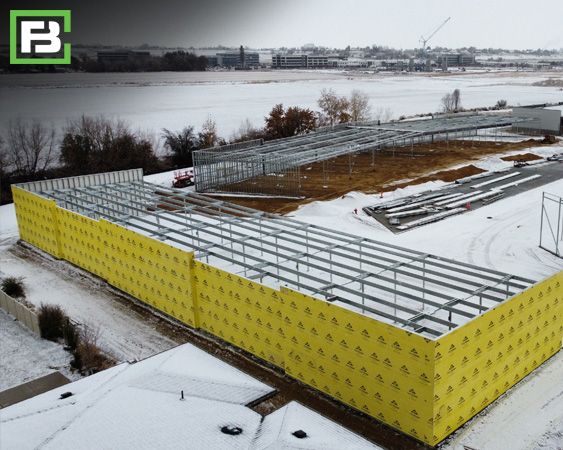 Cost. There are different factors that affect the cost to build a climate-controlled self storage facility including the size, number of storage units, and complexity of your project. When costing out a climate-controlled build, you will need to factor in the cost of the HVAC mechanical system and extra insulation your facility will require. A study by Storelocal Storage Coop suggests that you can expect to pay about $60-70 per square foot to build a non-climate controlled self storage facility (multi-story self storage units typically cost $70-95 per square foot. When costing out a climate controlled self storage unit build, a good rule of thumb is to add 15% to each square foot or to the total cost.
Cost. There are different factors that affect the cost to build a climate-controlled self storage facility including the size, number of storage units, and complexity of your project. When costing out a climate-controlled build, you will need to factor in the cost of the HVAC mechanical system and extra insulation your facility will require. A study by Storelocal Storage Coop suggests that you can expect to pay about $60-70 per square foot to build a non-climate controlled self storage facility (multi-story self storage units typically cost $70-95 per square foot. When costing out a climate controlled self storage unit build, a good rule of thumb is to add 15% to each square foot or to the total cost.
The cost for either type of facility can vary based on other factors as well – the cost of steel and your location. Costs tend to be higher in a major metropolitan area than in a small community. It is also key to remember that monthly utility costs will be greater for climate-controlled storage units. However, these costs will go down as capacity increases.
In a study by Statista Research Department, renting a climate-controlled self-storage unit in the U.S. was on average $10 more expensive than a non-climate-controlled unit in 2024. In April, the average rent for a climate-controlled unit was $149. Renting the smallest unit costs on average $53 2.
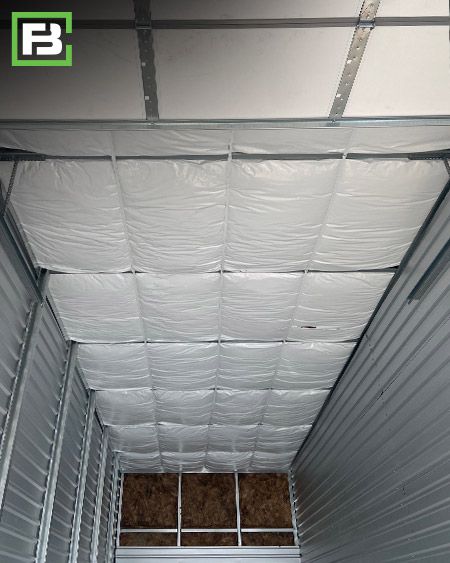 Insulation. The majority of self storage exterior walls contain long rows of metal doors. These doors are not air-tight, which can be a challenge with heating or cooling. That is why it is key to work with a self storage builder (such as Forge Building Company) that will design your climate control units with fully insulated interior walls and roofing.
Insulation. The majority of self storage exterior walls contain long rows of metal doors. These doors are not air-tight, which can be a challenge with heating or cooling. That is why it is key to work with a self storage builder (such as Forge Building Company) that will design your climate control units with fully insulated interior walls and roofing.
Typically, R 19 fiberglass is recommended for walls and R 38 for the roof. The facility’s heat loss and gain must be determined by the HVAC contractor who will calculate insulation values, ceiling heights, cubic area, type of construction, amount of lighting, exterior doors, number of windows, and the air infiltration from outside. It is key to work with a contractor that also understands commercial insulation requirements imposed by the International Energy Conservation Council (IECC) which are designed to preserve energy.
Temperature. Climate control units typically maintain a temperature below 85 degrees in the summer and above 55 degrees in the winter, with humidity below 65% to stop mold or mildew.
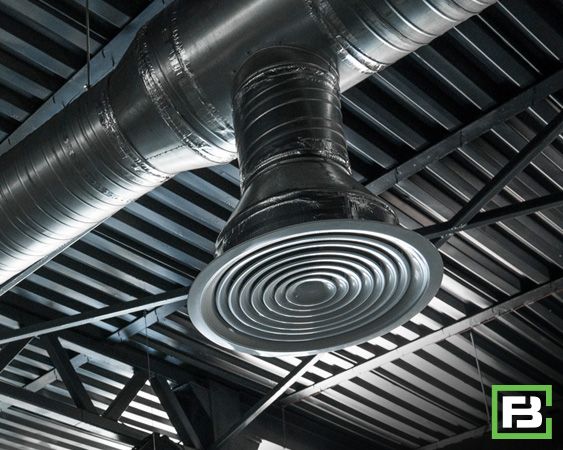 HVAC Systems. When it comes to selecting your HVAC system, it is key that you and your contractor research the costs and efficiencies of various heating and cooling units to determine which one is best for your facility. You will also want to identify HVAC systems that have a separate humidistat for reducing humidity.
HVAC Systems. When it comes to selecting your HVAC system, it is key that you and your contractor research the costs and efficiencies of various heating and cooling units to determine which one is best for your facility. You will also want to identify HVAC systems that have a separate humidistat for reducing humidity.
For other design considerations, see our blog: Is Climate-Controlled Self Storage Worth the Investment?
There are a number of benefits to building climate-controlled self storage. These include:
Climate-controlled self storage continues to be sought after by both customers and developers. While the cost to build is more expensive, they can be a great asset for self storage owners providing additional revenue and a competitive advantage to attract new tenants.
The best way to get started with this type of build is to partner with a highly-qualified self storage builder, like Forge Building Company, so you can rest assured that your facility will be built according to all applicable regulations. Partnering with the Forge team will get you the right preparation and execution so that your climate-controlled self storage facility can be constructed and open for business in no time.
For samples of climate-controlled self storage facilities the Forge team has built, see:
References
1. Storelocal.com. (2023, January 27). Retrieved from storelocal.com: https://members.storelocal.com/blog/considerations-for-a-climate-controlled-storage-facility
2. Statista. (2024, June 7). Retrieved from statista.com: https://www.statista.com/statistics/1051121/monthly-rent-climate-control-self-storage-unit-sizes-usa/
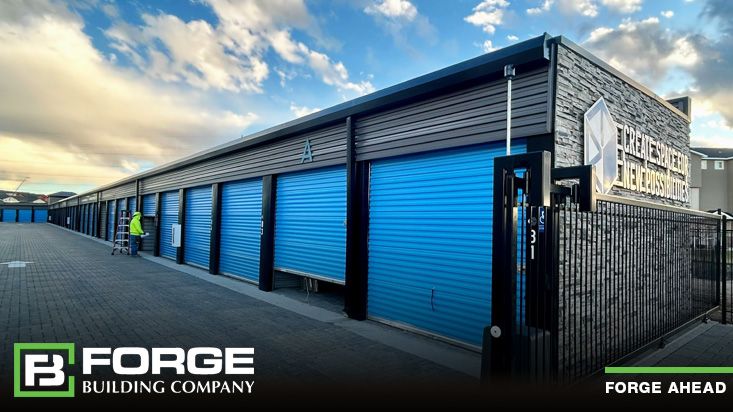
Your land has been purchased, permits have been pulled, your market feasibility study is complete, and financing is in order. Now, you’re finally ready to hire a self storage builder to develop your project. Choosing the right self storage builder can be a daunting task. After all, your future depends on having a well-designed facility that presents the image you want while providing the income potential you require.
This is a big investment. Cost, however, cannot be your only consideration — especially if this is your first venture into building a self storage facility. Contracting with the wrong builder can cause you all sorts of frustrations, time delays, and extra money. So, how do you choose a self storage builder? The following are some tips to help guide you in this process.
Before you schedule an appointment, make sure the builder you are considering is legitimate. They must be licensed, bonded, insured, and in good standing with the Better Business Bureau. If they claim to be a self storage builder, check with professional organizations such as the Self Storage Association. Furthermore, while the law provides some protection from fraudulent or incompetent contractors, it doesn't guarantee honest transactions or quality work. After all, your financial investment is at stake. Look at previous projects similar in scale to your project and check references.
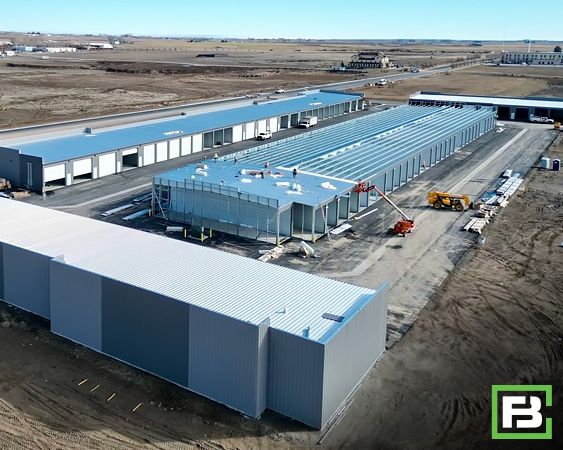 Building your self storage facility is an investment that will bring substantial returns over time. With so much at stake, your builder's experience should be a top priority. It is not enough to be a great builder — the company you choose needs to be a steel building expert.
Building your self storage facility is an investment that will bring substantial returns over time. With so much at stake, your builder's experience should be a top priority. It is not enough to be a great builder — the company you choose needs to be a steel building expert.
When building a self storage facility, construction requirements are very specific to the industry. An architect who doesn’t have extensive experience in self storage may miss these pieces in their design.
Forge Building Company is THE steel building expert. As such, we will supply your steel and provide an experienced installation crew for your project. Our installers pay close attention to every little detail ensuring your facility is built to the highest level of quality.
As the leading authority in steel buildings, we offer a comprehensive suite of services tailored to meet our clients' diverse needs. Additionally, we provide high-quality steel and deploy proficient installation crews. We also ensure that every aspect of your construction project is executed with precision and excellence.
Our extensive experience and industry-leading expertise enable us to offer a diverse range of steel products customized to match the unique demands of your venture. Whether your project requires structural beams, roofing panels, or specialized components, our seasoned experts are dedicated to guiding you through selecting the optimal materials. We prioritize using steel renowned for its strength, durability, and performance to ensure the longevity and resilience of your structure.
Our unwavering commitment to quality means we never compromise on excellence. We adhere strictly to industry standards and best practices, ensuring your facility is built with precision and craftsmanship. Whether it's a single-story drive-up facility, a multi-story complex, or a combination of various elements, Forge Building Company guarantees unparalleled expertise and excellence in steel construction.
See what Adam Pakes, CEO of LuxeLocker has to say about working with Forge as its steel provider and steel erector: https://www.youtube.com/watch?v=mtNqxjbVyiQ.
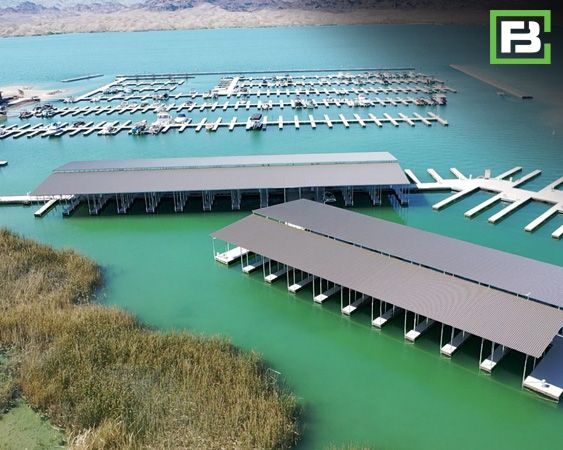 When selecting your self storage builder, look at the different services the self storage builder has to offer. The team at Forge offers a range of services, including project management, site planning, and structural engineering/design-build, along with the installation and erection of steel.
When selecting your self storage builder, look at the different services the self storage builder has to offer. The team at Forge offers a range of services, including project management, site planning, and structural engineering/design-build, along with the installation and erection of steel.
Look for a self storage builder that can offer everything your self storage project requires, such as multi-purpose self storage buildings, customized structures, and boat and RV storage buildings and canopies. By working with one full-service company for all project elements, you will eliminate duplication of efforts and dealing with all the brokers, shipping companies, and subcontractors needed if you were not using a single-source supplier. Ultimately, you will have more control over budgets and deadlines.
See what Mychal Gorden of Desert Land Group and Havasu Riviera Marina has to say about working with Forge: https://www.youtube.com/watch?v=GcL433bfUu4
When selecting your self storage builder, it is key to work with a company that has a team of professionals running your construction site that will maximize efficiencies, foresee and solve potential problems before they cost you time and money, and who will keep you informed at each step of the project. Experienced self storage builders will have well-honed protocols to minimize surprises and keep a project on track. Talk with previous customers to ensure they had a good experience and take a tour of the facilities the company has designed and built. It is important to meet all the key people working on your project.
From meticulous project scheduling and procurement planning to comprehensive risk management and communication strategies, Forge Building Company offers a holistic approach to planning that guarantees the triumph of your construction venture. Our dedicated project managers oversee every aspect of the project, ensuring that milestones are met, budgets are adhered to, and quality standards are upheld.
 Another key factor to look for in a self storage builder is one that understands the importance of meticulous planning. At Forge Building Company, meticulous planning serves as the bedrock of our operations. We know that the triumph of your construction project relies on thoughtful layout considerations and comprehensive site analysis. Leveraging our team of experts, we specialize in crafting strategic plans that optimize space utilization, augment functionality, and enhance efficiency. This ensures your facility is meticulously tailored to meet your unique needs and objectives.
Another key factor to look for in a self storage builder is one that understands the importance of meticulous planning. At Forge Building Company, meticulous planning serves as the bedrock of our operations. We know that the triumph of your construction project relies on thoughtful layout considerations and comprehensive site analysis. Leveraging our team of experts, we specialize in crafting strategic plans that optimize space utilization, augment functionality, and enhance efficiency. This ensures your facility is meticulously tailored to meet your unique needs and objectives.
Drive aisles, turning radiuses, door size, security, lighting, keyless entry, and more must be considered. An experienced self storage builder can advise you on these issues early in the design process and help you lay out your buildings to maximize the number of rentable units.
At Forge, our process begins with an in-depth assessment of your project requirements, including site specifications, budgetary constraints, and desired timelines. We conduct thorough site analyses to identify potential challenges and opportunities, allowing us to develop proactive solutions that mitigate risks and maximize project success.
Drawing upon years of industry experience and technical expertise, our team collaborates closely with you to translate your vision into actionable plans. Additionally, we employ cutting-edge technologies and innovative design strategies to create layouts that optimize workflow, enhance user experience, and foster operational efficiency.
Effective communication is paramount in successful project planning and execution. Thus, we prioritize maintaining open lines of communication with our clients, subcontractors, and other stakeholders throughout every stage of the construction process. Regular meetings, progress reports, and collaborative workshops ensure that everyone remains informed, engaged, and aligned toward the common goal of project success.
By fostering a culture of collaboration and transparency, we create an environment where ideas are shared, challenges are addressed, and solutions are implemented swiftly. This proactive approach minimizes disruptions and accelerates project timelines, ultimately delivering superior results that exceed expectations.
Finally, it is key to work with an experienced self storage builder that offers comprehensive structural engineering services. These services encompass designing/building solutions and are willing to consult with you throughout the entire project—from site development to building design to completed construction. These services will enable your self storage builder to work closely with your architect to design all the amenities, utilities, and structural requirements that are unique to self storage. In the end, this will save you time and money.
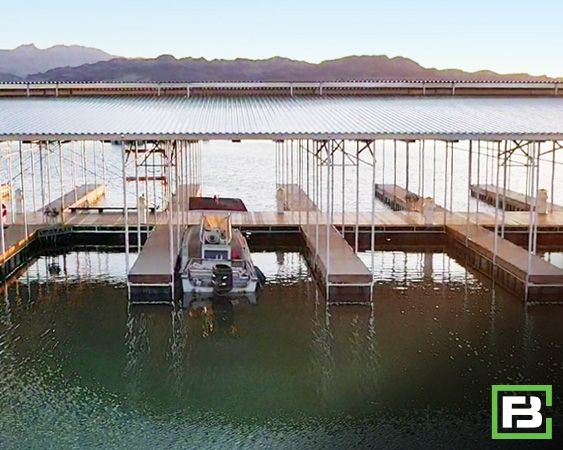 Forge understands that robust design and meticulous planning are pivotal for project success. Thus, we offer expert structural engineering support to actualize your vision seamlessly. Whether your project entails a single-story drive-up facility, a multi-story complex, covered boat and RV storage, storage condos, or a fusion of these elements, our team possesses the expertise and creativity to materialize your dream facility.
Forge understands that robust design and meticulous planning are pivotal for project success. Thus, we offer expert structural engineering support to actualize your vision seamlessly. Whether your project entails a single-story drive-up facility, a multi-story complex, covered boat and RV storage, storage condos, or a fusion of these elements, our team possesses the expertise and creativity to materialize your dream facility.
Leveraging cutting-edge software, technologies, and premium-grade steel, our engineers carefully craft detailed drawings and plans for the project’s blueprint. These documents transcend mere visual representations, encapsulating critical details essential for flawless installation. Every design aspect is documented to ensure accuracy and compliance with industry standards, from precise dimensions and material specifications to meticulous load calculations and structural analysis.
See what Mychal Gorden of Desert Land Group and Havasu Riviera Marina has to say about working with the Forge engineering team: https://www.youtube.com/watch?v=pPX7A1eZ88A
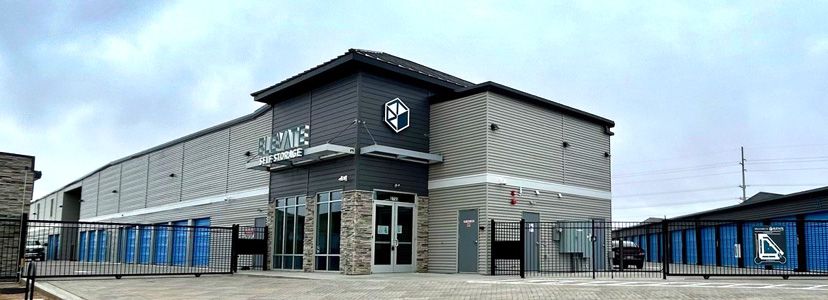
In the competitive landscape of self storage construction, choosing the right builder is crucial to your success. With the team at Forge by your side, you’re not just hiring a storage unit builder—you’re partnering with a team of dedicated professionals committed to excellence in planning, design, engineering, construction, and project management.
No matter what type of self storage project you envision building, choose Forge Building Company as your one-stop shop for all your self storage design, construction, and expansion needs. What sets Forge apart is not just our commitment to building storage facilities but also our dedication to crafting solutions tailored to meet the unique needs of each project. Our clients expect projects delivered on time and on budget. When you choose Forge, you are choosing quality, reliability, and innovation every step of the way.
Finally, with our proven track record of delivering superior results, you can trust Forge Building Company to bring your vision to life with precision, efficiency, and unmatched expertise. Contact us today to discover how we can elevate your next steel construction project to new heights and success.
See why Elevate Self Storage selected Forge as their self storage builder: https://www.youtube.com/watch?v=BMCRBEwlMIM.
Contributing Editor: Phil Warchol, Forge Building Company
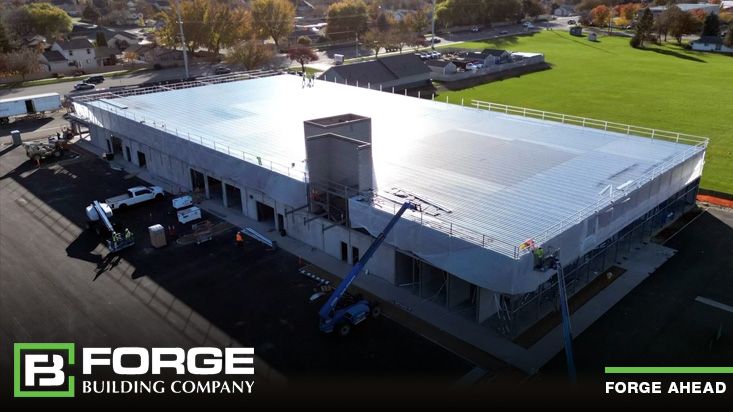
In today’s rapidly evolving landscape of construction and development, the demand for efficient, durable, and cost-effective solutions continues to soar. Enter pre-engineered metal building (PEMB) – a game-changer in the industry. A pre-engineered metal building system is a building that is constructed with a steel frame system that supports a metal roof and wall panels. They are pre-designed to adhere to precise dimensions in a factory, then the building components are brought to the site in completely knock down condition (CKD), and finally, they are fixed/jointed at the site and raised with the help of cranes.
An efficiently designed pre-engineered building can be lighter than the conventional steel buildings by up to 30%. Lighter weight equates to less steel and potential price savings in structural framework.
PEMBs have revolutionized the construction landscape across various sectors, including agriculture, recreational sports facilities, warehouses, aircraft hangers, community centers, storage warehouses, and more. These structures offer a plethora of benefits that make them an ideal choice for developers, investors, and owners.
 There are countless benefits of using pre-engineered metal buildings, including:
There are countless benefits of using pre-engineered metal buildings, including:
Cost efficiency: One of the most significant advantages of pre-engineered metal buildings is their cost efficiency. These structures are typically more affordable to construct compared to traditional building methods—the streamlined design and manufacturing process of PEMBs results in reduced construction time and labor costs. Additionally, the durability and low maintenance requirements of metal buildings translate to long-term cost savings for facility owners. Pre-engineered metal buildings are resistant to pests, rot, and corrosion, reducing the need for frequent repairs and upkeep. This translates to lower maintenance costs and enhanced durability over the lifespan of the facility.
Speed of construction: Pre-engineered metal buildings take almost half the time of a traditional construction project to build, saving you time, labor, material, and money. Time is money, especially in the world of construction.
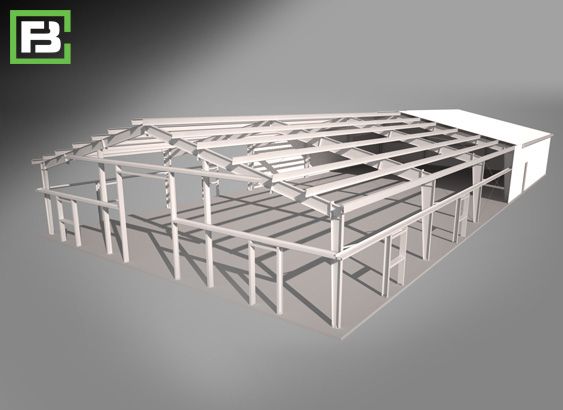
Design: Many owners interested in pre-engineered metal buildings are looking for a structure with an open, extensive interior space. There are endless options for the design of pre-engineered buildings, both inside and out. Modern advancements in technology and construction techniques have made it possible to customize PEMBs to meet specific aesthetic and functional requirements. Whether you envision a sleek and contemporary structure or a more traditional look, pre-engineered metal buildings can be tailored to suit your preferences.
Structural integrity: Pre-engineered metal buildings are renowned for their strength and resilience. Constructed from high-quality steel, these buildings are often more reliable, durable, and resistant to extreme weather conditions, seismic activity, and other environmental factors.
Sustainability: Pre-engineered metal buildings are inherently eco-friendly due to their recyclability and energy efficiency. Steel is one of the most recycled materials in the world, making it an environmentally responsible choice for building construction. Furthermore, the energy-efficient design of metal buildings helps reduce energy consumption and operating costs over time. These structures are tightly sealed, require less insulation than standard buildings, and can be designed with roofing that deflects the sun’s harsh rays.
Flexibility of expansion: PEMBs can be easily expanded in length by adding additional bays. Also, expansion in width and height is possible by pre-designing for future expansion.
So how do PEMBs compare to conventional steel buildings? Here’s the basics1.
| Properties | Pre-Engineered Steel Building | Conventional Steel Building |
|---|---|---|
| Structural Weight | Pre-engineered buildings are, on the average, 30% lighter because of the efficient use of steel.
Secondary members are light weight roll formed “Z” or “C” shaped members. |
Primary steel is hot rolled “T” sections which are, in many segments, heavier than what is actually required by design.
Secondary members are selected from standard hot rolled sections which are much heavier. |
| Design | Quick and efficient design since PEMB’s are mainly formed by standard sections and connections design, time is significantly reduced. | Each conventional steel structure is designed from scratch with fewer design options available to the engineer. |
| Construction Period | Average 6 to 8 weeks | Average 20 to 26 weeks |
| Foundation | Simple design, easy to construct and light weight. | Extensive, heavy foundation required. |
| Erection and Simplicity | Since the connection of compounds is standard, the learning curve of erection for each subsequent project is faster. | The connections are normally complicated and differ from project to project resulting in increasing the time for erection of the buildings. |
| Erection Time and Cost | The erection process is faster and much easier with very less requirement for equipment | Typically, conventional steel buildings are 20% more expensive than PEMB. Erection process is slower and extensive field labor is required. Heavy equipment is also needed. |
| Seismic Resistance | The low weight flexible frames offer higher resistance to seismic forces. | Rigid heavy frames do not perform well in seismic zones. |
| Overall Cost | Price per square foot may be as low as by 30% than the conventional building. | Higher price per square foot. |
| Architecture | Outstanding architectural design can be achieved at low cost using standard architectural details and interfaces. | Special architectural design and features must be developed for each project which often requires research and thus resulting in higher cost. |
| Future Expansion | Future expansion is very easy and simple. | Future expansion is more tedious and costly. |
| Safety and Responsibility | Single source of responsibility is there because the entire job is being done by one supplier. | Multiple responsibilities can result in the question of who is responsible when the components do not fit in properly, insufficient material is supplied, or parts fail to perform particularly at the supplier/contractor interface. |
| Performance | All components have been specified and designed specially to act together as a system for maximum efficiency, precise and peak performance in the field. | Components are custom designed for a specific application on a specific job. Design and detailing errors are possible when assembling the diverse components into unique buildings. |
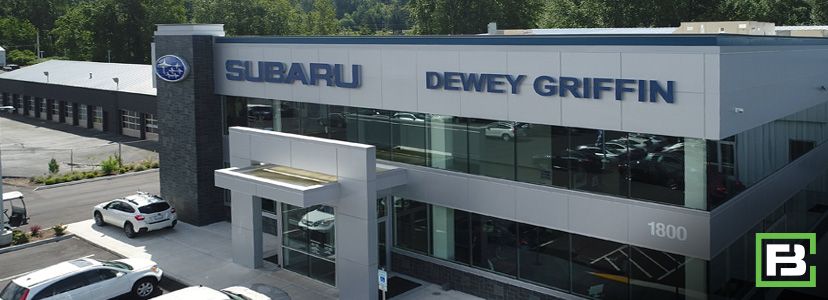
The benefits of pre-engineered metal buildings are undeniable as an investment alternative. They can be built and adapted to suit a wide variety of applications across a variety of industries. Investors and individuals who are looking to build or expand can capitalize on incorporating a PEMB given the economic advantage of investing in a structure that takes less time to design, produce, erect, and maintain.
Pre-engineered metal buildings prove their worth from day one, providing companies and professionals with many opportunities for expansion and growth. They are also expandable and easily customized to meet the needs of a growing business across various industries. New sections can be bolted onto any side. If a section of the building is damaged, repairs can be performed easily, often using replacement parts from the original manufacturer.
Construction time, labor costs, and material costs are more predictable with a pre-engineered metal building system than with conventional construction. Components are manufactured and shipped from a controlled site, so there are fewer labor and human error costs to consider.
If this is a solution you’d like to consider, talk to the steel building experts at Forge. We’d love to help with your next project.
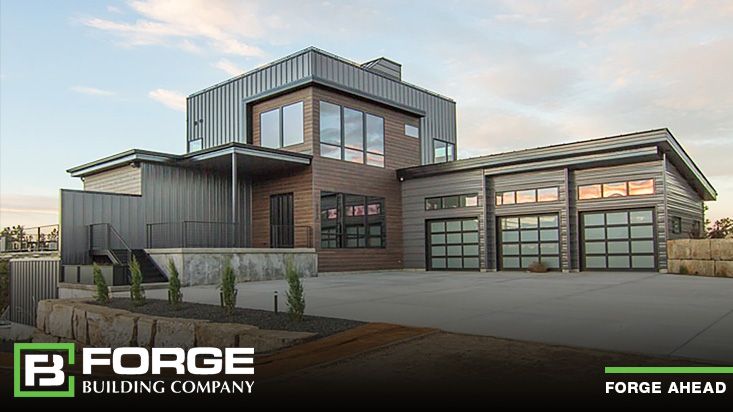
Reference
1. The Constructor. (n.d.). Retrieved from theconstructor.org: https://theconstructor.org/building/pre-engineered-steel-building-components-difference-advantages/37187/